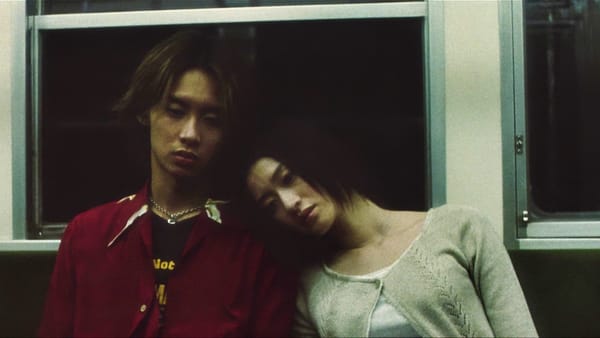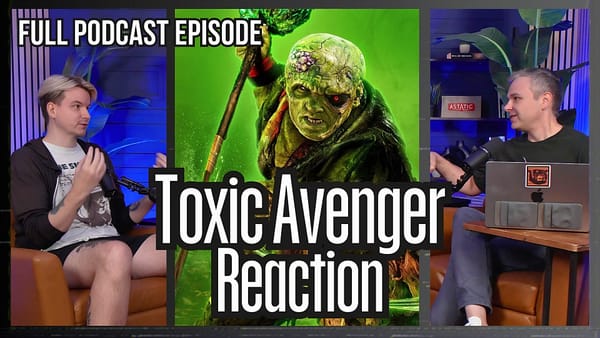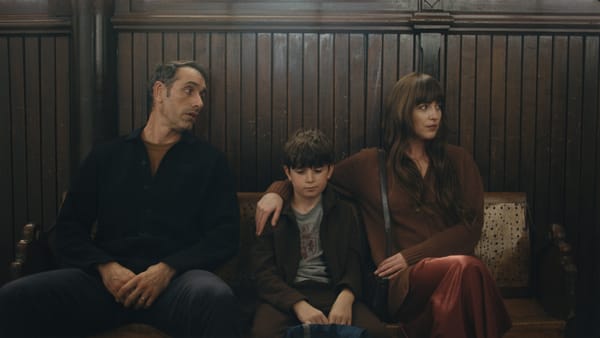Naomi Scott Carries 'Smile 2' Through Its Predictable Scares
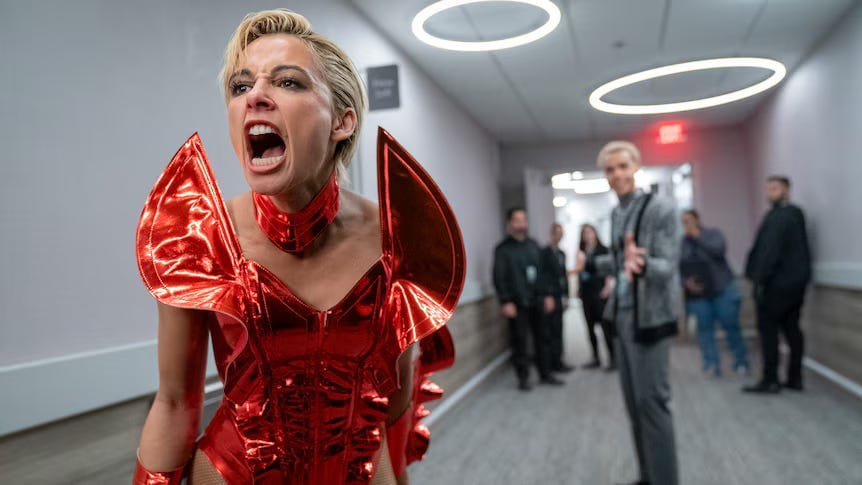
Horror sequels are a tricky business. The best of them build on their predecessors, deepening the mythology and taking creative risks that push the story into new territory. The worst? They settle for recycling familiar beats, banking on spectacle over substance.
Smile 2, sadly, falls into the latter camp.
It had every opportunity to rise above the original Smile, to take the franchise’s eerie potential and dig into something bold and fresh. Instead, it gives us more of the same—but with one undeniable saving grace.

Let’s start with a question: Who are these Smile movies actually for? Because they’re definitely not for me. The first Smile was an overhyped jumpscare fest with some decent performances that occasionally tried to engage with its heavy themes. But overall, it was derivative, predictable, and, at times, frustrating. The atmosphere? It was fine but not distinct enough to elevate it into anything truly memorable. It wasn’t bad; it just wasn’t special.
So, going into Smile 2, my expectations were low. And yet, I still found myself surprised—but not by the movie itself. The real standout here, the one thing that keeps this sequel from completely collapsing, is Naomi Scott.
Scott delivers a lead performance that is so committed, so raw, it feels like she’s operating in a much better film than the one she’s actually in. As Skye Riley, a pop star spiraling from severe PTSD, Scott is magnetic in nearly every scene. No matter how repetitive or ridiculous the story gets, she’s compelling to watch, grounding even the film’s most absurd moments with an emotional intensity that deserves far better material.
But the movie around her? It’s essentially a remix of the first film. Instead of a therapist unraveling under the Smile Demon’s curse, we follow a doomed pop star struggling to keep her life from falling apart. Skye’s suffocating world is laid out in heavy, often oppressive detail, culminating in the inevitable passing of the curse during a grisly self-harm scene.

From there, Smile 2 follows a familiar pattern: relentless jump scares, a handful of moderately impressive set pieces, and far too many “it was all just a dream” moments that undercut any real emotional stakes.
That’s the biggest issue with Smile 2. It repeatedly undercuts itself. Scene after scene builds toward something shocking or violent, only to pull the rug out and reveal it was all a hallucination, another demon-fueled delusion. This isn’t just frustrating—it feels lazy, like the film is more interested in showing off overblown visuals than telling a coherent story. By the third or fourth fake-out, it’s hard to care whether anything is real or not.
And that’s a shame because Skye Riley could have been a genuinely fascinating protagonist. The film gives her a dark, compelling backstory, revealed through flashbacks and nightmares. These scenes allow Scott to showcase her range, portraying different facets of the same character: the self-indulgent, reckless starlet whose actions lead to tragedy; the grieving, emotionally drained celebrity barely holding it together; and, at times, a complex blend of both. Scott’s performance is achingly human, turning what could have been a one-dimensional archetype into a fully realized person you can’t help but root for.
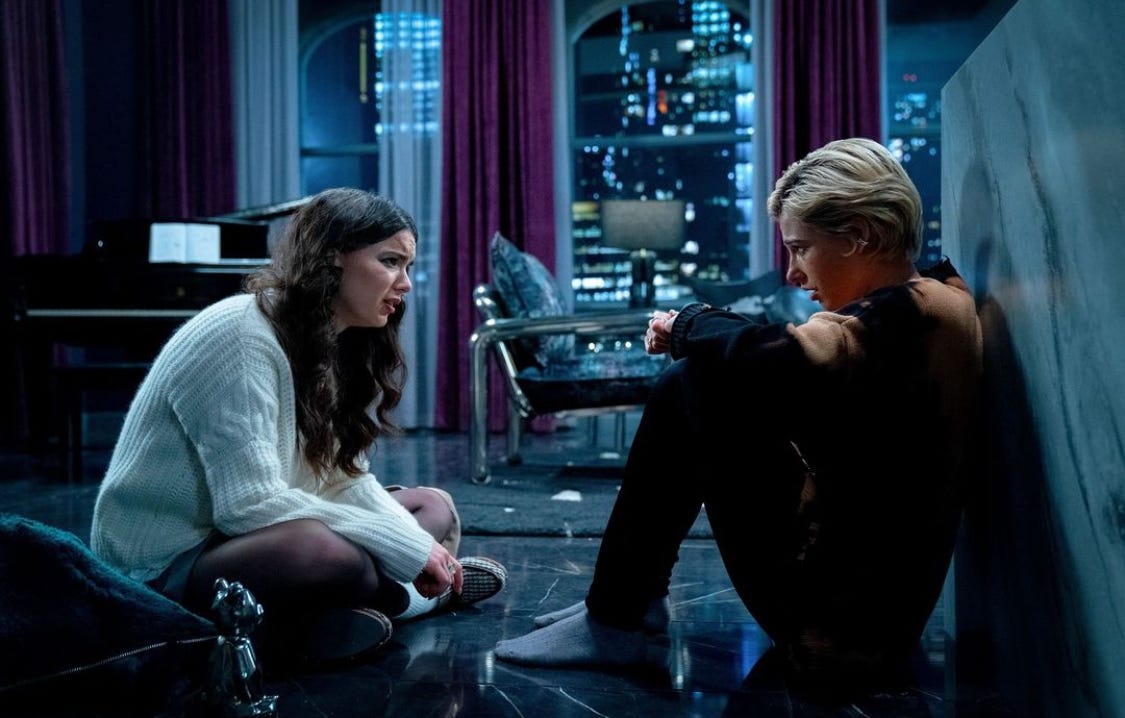
But instead of leaning into the potential of Skye’s character, Smile 2 settles for cheap gimmicks. It dangles threads of meaningful character development, only to abandon them for gratuitous, over-the-top set pieces that add little to the story. Director Parker Finn doubles down on the franchise’s worst instincts, favoring superficial thrills over emotional depth.
That said, there are a few other bright spots worth mentioning. The opening scene, which brings back genre fave Kyle Gallner from the original film, is genuinely tense and well-staged, building to a striking title sequence that sets a promising tone—one the rest of the movie can’t quite live up to. Lukas Gage also stands out in a small but memorable role as a cursed drug dealer. He brings an edgy charisma to his scenes, leaving an impression that lingers long after he’s gone.
And, of course, there are the visuals. If there’s one thing the Smile franchise does consistently well, it’s crafting eerie, stylish imagery designed to unsettle. Finn’s direction leans into neon-soaked atmosphere and creepy, off-kilter framing that will likely satisfy fans looking for scares. And the more physical sequences — concert rehearsals, dance numbers, and tense chase scenes — underscore Scott’s admirable work as a gifted stage performer and singer. But even these moments feel too hollow without a stronger narrative foundation to support them.
Ultimately, though, these Smile movies just aren’t for me. They rely too heavily on surface-level tricks and tropes, sacrificing narrative depth and emotional resonance along the way. Naomi Scott’s great performance deserves a movie willing to meet her halfway. Instead, she’s left carrying a film that isn’t interested in its own potential.
Smile 2 is on VOD now, so if you’re curious—or if you enjoyed the first film—it’s easily accessible. Maybe you’ll see something in it that I didn’t. For better or worse, Smile 2 is here, and I wouldn’t be surprised if Smile 3 is already lurking around the corner.


